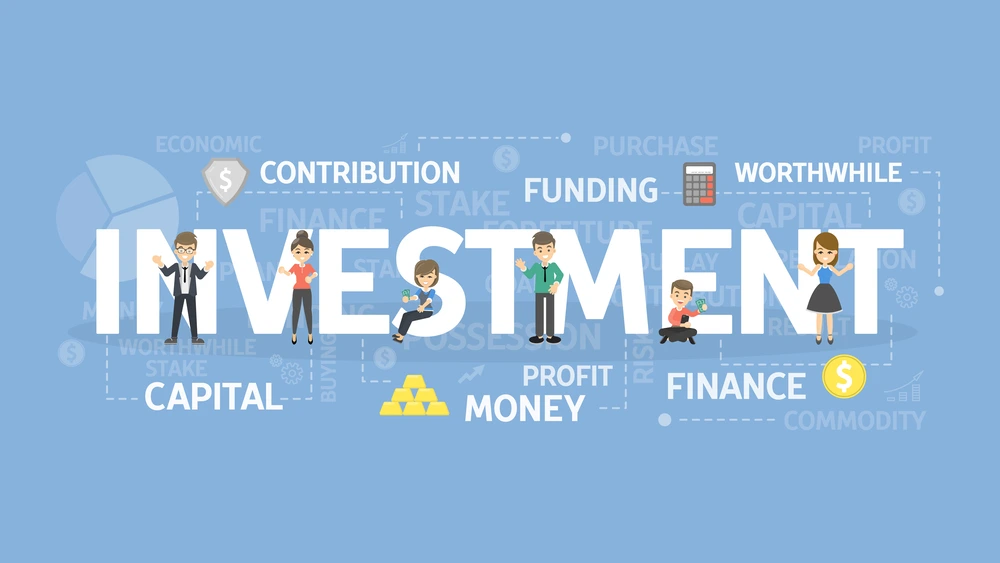Introduction
Investment, the art and science of allocating resources with the goal of generating returns, has been a fundamental driver of economic growth and wealth creation throughout history. From the ancient Silk Road traders to today’s complex financial markets, the concept of investment has evolved dramatically. This article delves into the diverse landscape of investment, exploring different asset classes, strategies, risk factors, and the changing dynamics of the modern investment landscape.
I. Understanding Investment
Investment involves committing resources, typically money, with the expectation of achieving future benefits. Investors seek to grow their wealth by allocating funds across various assets, such as stocks, bonds, real estate, and commodities. The central principle of investment is the trade-off between risk and potential reward: higher returns are generally associated with higher risks.
II. Key Asset Classes
A. Stocks: Owning shares of a company’s stock provides investors with ownership and potential dividends. Stock prices can be volatile, influenced by factors such as company performance, market sentiment, and macroeconomic trends.
B. Bonds: Bonds are debt securities issued by governments or corporations. Investors lend money in exchange for regular interest payments and the return of principal at maturity. Bonds are generally considered lower-risk investments compared to stocks.
C. Real Estate: Real estate investment involves purchasing properties, such as residential, commercial, or industrial real estate, with the aim of generating rental income and capital appreciation.
D. Commodities: Commodities include physical assets like gold, oil, agricultural products, and metals. They can serve as a hedge against inflation and offer diversification benefits to investment portfolios.
III. Investment Strategies
A. Value Investing: This strategy involves identifying undervalued assets with the expectation that their market prices will eventually reflect their true worth. Prominent value investors, like Warren Buffett, often seek out stable, established companies trading below their intrinsic value.
B. Growth Investing: Growth investors focus on companies with strong growth potential, even if their current valuations appear high. The aim is to benefit from capital appreciation as the company’s earnings increase.
C. Diversification: Diversifying a portfolio by investing in different asset classes can help manage risk. When one asset performs poorly, others may perform well, reducing overall portfolio volatility.
D. Passive vs. Active Investing: Passive investing involves tracking a market index through instruments like exchange-traded funds (ETFs), aiming to replicate the index’s performance. Active investing, on the other hand, entails selecting individual assets with the goal of outperforming the market.
IV. Risk and Risk Management
Investment is inherently associated with risk. Factors such as market volatility, economic downturns, regulatory changes, and company-specific events can impact investment outcomes. Risk management involves strategies like asset allocation, diversification, and hedging to mitigate potential losses.
V. Technological Transformation
Advancements in technology have transformed the investment landscape. Online trading platforms, robo-advisors, and algorithmic trading have democratized access to markets and streamlined investment processes. However, technological reliance also raises concerns about cybersecurity and algorithmic-driven market instability.
VI. Environmental, Social, and Governance (ESG) Investing
The concept of responsible investing has gained momentum, with ESG considerations becoming integral to investment decisions. Investors evaluate a company’s environmental impact, social responsibility, and corporate governance practices, aligning their investments with ethical and sustainable principles.
VII. Global Investment Landscape
Globalization has interconnected economies and markets, enabling investors to access opportunities around the world. Emerging markets offer growth potential, but also carry higher risks due to political instability and currency fluctuations.
VIII. Investment in the Digital Age
Cryptocurrencies and blockchain technology have introduced a new frontier in investment. Bitcoin, Ethereum, and other digital assets have garnered attention for their potential to disrupt traditional financial systems, but they also come with heightened volatility and regulatory uncertainties.
IX. The Role of Financial Advisors
Navigating the complexities of investment often requires expert guidance. Financial advisors provide personalized strategies, considering an individual’s risk tolerance, financial goals, and market knowledge.
Conclusion
Investment is a dynamic and multifaceted endeavor that plays a pivotal role in shaping economies and individual financial well-being. From the traditional avenues of stocks and bonds to the innovative realms of cryptocurrencies and ESG investing, the investment landscape continues to evolve. As technology, globalization, and societal values reshape the world of finance, investors must remain informed, adaptable, and conscious of the risks and opportunities that come with the pursuit of financial growth.







